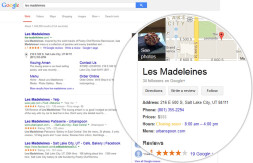Using Hard Data when Managing PPC Campaigns
Often times we will talk to online merchants that are not actively marketing through pay per click channels. When asked why, they will often state that they are not getting a positive return on investment. However, we also find that often those same people do not have a mechanism in place to track the success of their pay per click campaigns. In reality, they do not know if their campaigns are successful or not as they rely more on a hunch than on hard data. In fact, there is a good chance that some of their campaigns are very successful while others are not. The purpose of this article is to encourage you to implement a tool to track your return so that you make educated marketing decisions. In this article, we are also going to focus exclusively on Google AdWords because it has the potential to drive the most amount of traffic to your site at this time. There are other pay per click engines with their own tracking features in place which we also encourage you to use.
The first step in successfully running a Google AdWords campaign is setting up conversion tracking. To do this, first login to Google AdWords account. Next, click on the Tools link and then Conversion Tracking. Finally, click the “Get Conversion Page Code” link. As an online retailer, you’ll want to select Purchase/Sale for the conversion type. By default, Google will set the value to $1, however it is very important that you use a dynamic variable since your net order amount will be dependent on the actual order generated. Nexternal clients can click here for a sample of what the code should look like. Once you have that code, it is important that you put it on the order confirmation screen (the screen that appears after the order is placed). Most of the code is JavaScript which is not going to be visible to the customer. It is simply used to pass data back to Google.
Once this code is in place, conversion data will begin showing up in your Google AdWords campaign interface. On the Campaign Detail screen, you’ll see valuable information such as Conversion Rate and the Average Position of the ads for each Ad Group. While this information is good, we recommend that you take it one step further by creating a custom report which is accessed by selecting the reports tab at the top of the page. Following are some report parameters that we often select:
- Report Type: Ad Group Performance
- Settings: Select relevant time range and Campaigns that you want to analyze
- Advanced Settings: Choose columns Conversions, Transactions, Conversion Rate, Sales Value
- Templates, Scheduling and Email: Name Your report and save it as a template so it is easy to recreate a similar report
Now you can look at each campaign and easily see how much money was spent and how many dollars in revenue were generated from that campaign. If you spent $200 on a campaign and generated $1400 in revenue, your margins do not need to be through the roof for the campaign to generate a positive return on investement (ROI). In fact, if you have campaigns that have a high revenue to cost ratio, take a close look at the ad position metric in those campaigns. It’s very likely that you can increase your minimum bid and have that campaign generate even more revenue for you by increasing your average position. Of course if your average position is close to one, you don’t need to increase your bid.
If you have campaigns that aren’t performing well, pause them. However, before you do, double check your campaign settings. You might be able to adjust some settings to make them work better for you. Following are some things worth trying:
1. Networks – choose to only show your ad when users search for your keywords on Google.
2. Target Audience – If you are a US based merchant that primarily targets US customers, English would be the appropriate choice.
3. Ad Scheduling – Many merchants get more orders during business hours as people tend to shop online while at work. Tune your ad scheduling to reflect this pattern.
4. Ad Serving – Select Optimize which will show better performing ads more frequently.
Often times tuning a campaign can make an ROI go from good to great. Keep in mind that with the above suggestions, you’ll also receive less traffic. However, the percentage of “good traffic” will be much better.
We believe that every merchant can benefit from pay per click marketing. It’s just a matter of tuning your campaigns to have them work more effectively. Do not look at pay per click marketing as a whole and conclude that it either works or does not. Looks at it on a more detailed level and tune accordingly. Your botton line will thank you.














